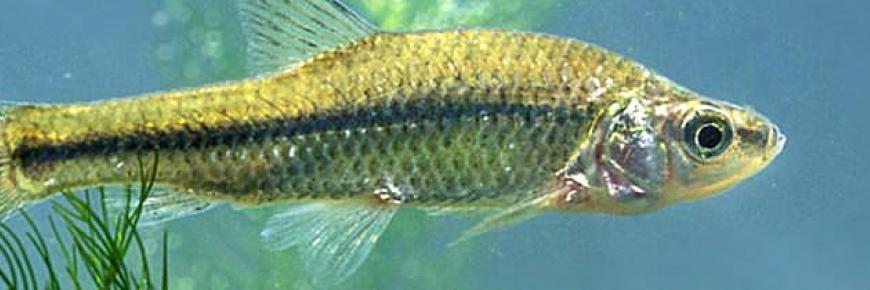A Striped Invasion
The Zebra Mussel is a freshwater filter-feeder which was introduced to Europe in the ballast water of ships travelling from Russia. This mussel is highly invasive - one mature Zebra Mussel can produce over one million eggs, giving rise to an entire new population!
 What impact does it have?
What impact does it have?
The Zebra Mussel has an extremely large capacity to filter water, reducing the availability of nutrients and oxygen to our native aquatic wildlife. It also out-competes and displaces some of our native mussel species – even sometimes attaching to the native species and effectively ‘stealing’ the passing nutrients leaving the victim to starve!
Our economy doesn’t escape the effects of the Zebra Mussel. With its prolific breeding, this invasive mussel clogs water pipes, filters and turbines damaging our infrastructure. Furthermore it disrupts recreation, fishing and aquaculture industries growing on equipment and boats.
So what’s being done?
With so many invasive species attacking our local ecosystems it can sometimes feel like we are fighting a losing battle. Control and eradication options are often costly, labour-intensive and limited in the effect they can have in open habitats.
So for this week’s species we did a bit more research to demonstrate that there is work on new technologies and options for controlling these problematic invaders.
The most common methods of control for the zebra mussel are as follows:
- Hand pulling/mechanical removal
- Chemical applications
- Oxygen deprivation
However, some new technologies have recently been developed that are not only exciting but also give rise to hopes that the mussel can be removed effectively and a at a reasonable cost.
For example, a new biological environmentally compatible product has been developed specifically to control invasive zebra mussel – Zequanox©.
This product is derived from a naturally occurring microbe – Pseudomonas fluorescens – containing dead cells of the microbe which mussels readily consume with their normal phytoplankton diet from the water. However, the active ingredient in Zequanox© then deteriorates the mussel’s digestive lining causing death. Highly selective and proven to leave other species unharmed!
However perhaps more exciting is the development of seismic energy in invasive aquatic species control. There has been major progress in the use of sound energy to control invasive species: either by altering fish behaviour, serving as a barrier in rivers, or disrupting their organ function. It is hoped that the use of the right seismic energy waves may be able to selectively target Zebra Mussels in all life stages from larvae to adult!
These new technologies and increased biosecurity give Europe hope when facing this striped-invasion. But everyone can play their part to reduce the spread of the Zebra Mussel. If you participate in water recreation activities, take time to check you have no hitch hikers on your equipment when moving from place to place. And if you spot one – let us know with our Smartphone app!

References
Gatlin, M. R., Shoup, D. E., Long, J. M (2013). Invasiv zebra mussels (Driessena polymorpha) and Asian clams (Corbicula fluminea) survive gut passage of migratory fish species: implications for dispersal. Biological Invasions 15: 1195-1200
Johnson, L. E. and Carlton, J. T (1996). "Post-establishment spread in large-scale invasions: dispersal mechanisms of the zebra mussel Dreissena polymorpha." Ecology 77: 1686-1690.
Matthews, J., Van der Velde. G., Bij de Vaate, A., Collas, F. P. L., Koopmam, K. R., Leuven, R. S. E. W (2013). Rapid range expansion of the invasive quagga mussel in relation to zebra mussel presense in thenetherlandsand westereurope. Biological Invasions
McMahon, R. F (1996). "The physiological ecology of the zebra mussel, Dreissena polymorpha, in North America and Europe." American zoologist 36: 339-363.
Ricciardi, A (2003). "Predicting the impacts of an introduced species from its invasion history: an empirical approach applied to zebra mussel invasions." Freshwater Biology 48: 972-981.
http://www.nrmsc.usgs.gov/node/3438
Photo Credits: Zebra Mussels (GBNNSS) ; Zebra Mussels (Paul Beckwith)

